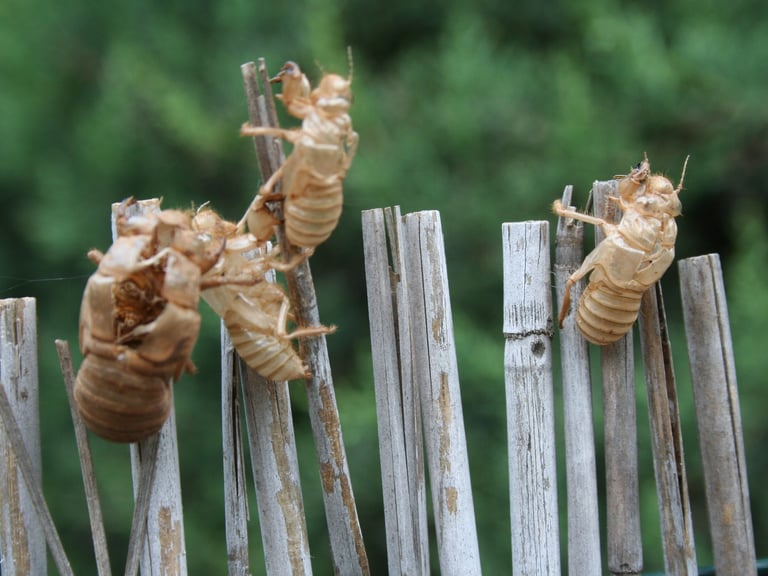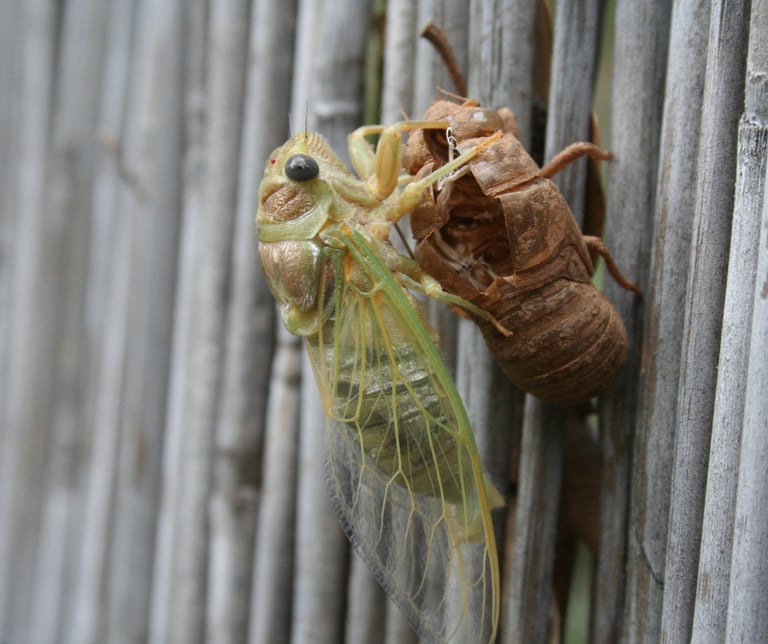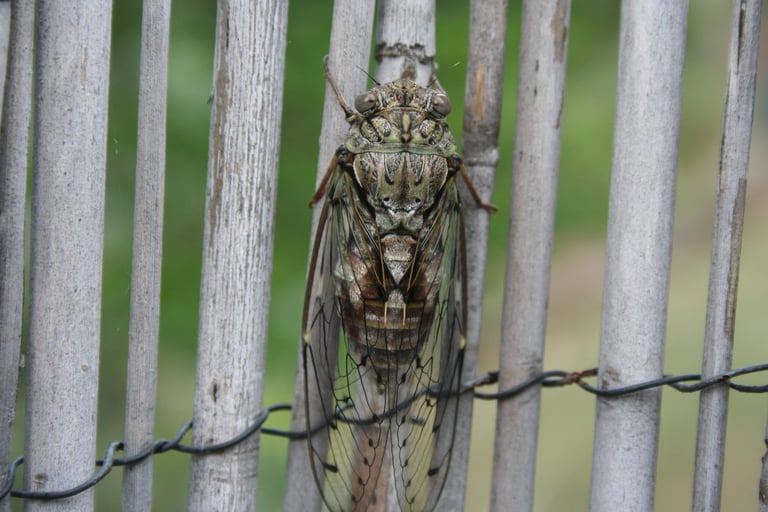
Tha Cicadas have arrived...
and the forest is alive with sound.
FLORA AND FAUNA AND THE FOREST WORLD
Joan
6/25/20232 min read
B. celebrated his birthday last Sunday. This date always feels significant for us both. Not only is it just before the summer solstice, but it is invariably the day that we first notice that the nightingales have stopped singing, and that the cicadas have arrived. The noisy cicadas have driven the nightingales away, we always joke. True to form the nightingales have fallen silent. But all week long we have been asking "where are the cicadas? " Today, exactly a week later , they have arrived. They are late! As noon approached, and the day was hotting up, they announced their arrival with a chorus of chattering from the trees . It is as if they all emerged from their underground sojourn at exactly the same time.








They have been living underground as grubs for at least a couple of years, forming tunnels and feeding on the sap from roots. I shall be looking out for their exoskeletons, discarded by the nymphs as they emerge from the ground and cling to the trunk of a tree. Often we find these dry papery little cases half way up fencing or on a garden arch. If we are very lucky, we may even see an adult cicada actually in the process of emerging. We like to watch over the next hour or two as its adult skin hardens in the air, its colour darkens and wings inflate with fluid, before finally it takes off. Here are a few photographs that we have taken in previous years.
There are three types of cicada that live in the Mediterranean area. The larger Cigale Plébéienne frequents pine forests, so clearly we have a lot of those. There is a slightly smaller one , the Cigale du Frêne, which lives on the bark of ash trees, and it is likely that there are some here too. There is also the tiny pygmy cigale, or cicada, which lives in dry arid grasslands. No doubt we hear those from time to time. We note different sounds from a high frequency buzz to a loud intermittent chattering. Apparently it is only the male cicada who makes this noise, in order to attract a mate. This is an urgent matter , for within five weeks or so the cicada's life cycle will have ended . In the interim, the female will have laid up to 400 eggs in different locations amongst the twigs and branches. After six to eight weeks the eggs will hatch, and the grubs will burrow into the ground. From there the whole cycle will begin again. Their arrival for us is one of the high points of summer.